
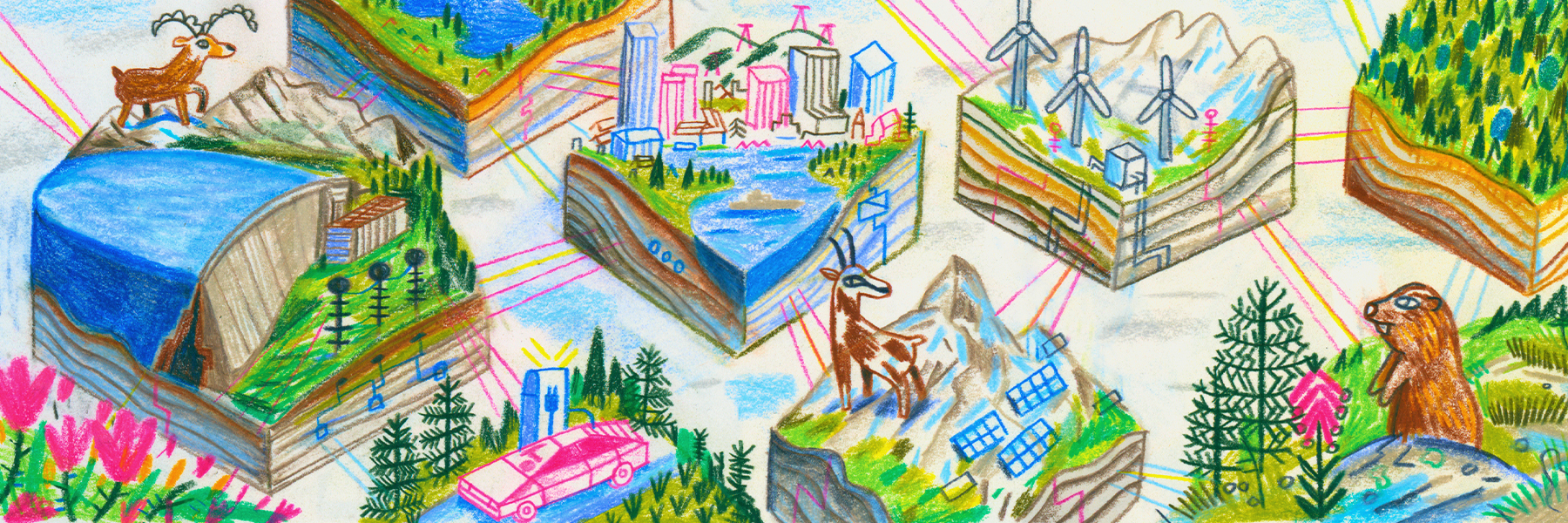
Swiss solutions for storing the energy of tomorrow
The global challenge is not only to produce more energy from renewable sources, but also to be able to store it. With its hydroelectric power plants in the Alps and innovative projects, Switzerland is contributing to the search for solutions for the efficient, long-term storage of electricity.
Around 30% of the electricity produced globally is generated by sunshine, wind, water and other sustainable sources. In the year 2000, this figure stood at 20%. The International Energy Agency (IEA) predicts that by 2050 almost 90% of electricity will be generated from renewable sources.
Switzerland already generates most of the electricity it consumes from renewable energies (75%), mainly via hydroelectric power stations. In recent years there has been an increase in photovoltaics, and to a lesser extent in wind power.
Solar panels are popping up all over the country, even in the most unthinkable places. Some Swiss entrepreneurs even want to produce solar energy on motorways.
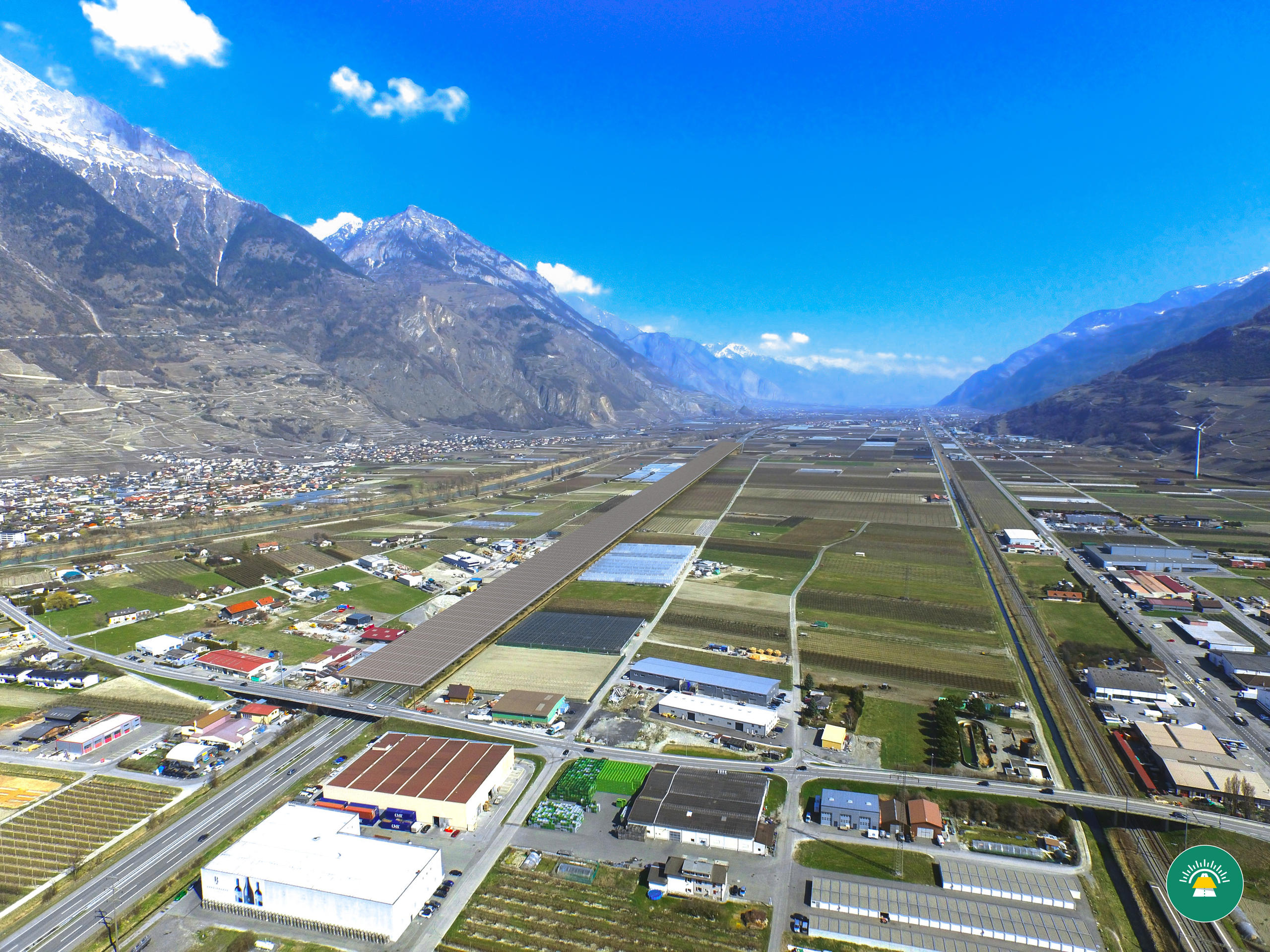
More
Can solar panels on highways accelerate the supply of green energy?
However, the electricity generated by solar and wind power is irregular and varies according to the seasons. Production can exceed demand, especially in summer. One of the main challenges of the energy transition is to develop systems capable of storing excess energy and returning it when it is needed.
‘Water battery’ in the Alps
Pumped-storage power stations are the most effective and economical solution. They allow water to be pumped to a higher altitude when there is an excess energy, and to release generated electricity when there is a shortage.
In Switzerland there are about 100 reservoirs for hydroelectric production, and about 15 of them have a pumping system. Compared to other Alpine countries, such as Austria, Germany and Italy, Swiss power stations generally have larger water-retention basins and are therefore able to operate over longer periods, notes the Association of Swiss Electricity Companies.
A new pumped-storage power station, one of the most powerful in Europe, came on stream in canton Valais in southern Switzerland in July 2022. This giant “water battery” will help compensate for fluctuations in solar and wind power on the continent.
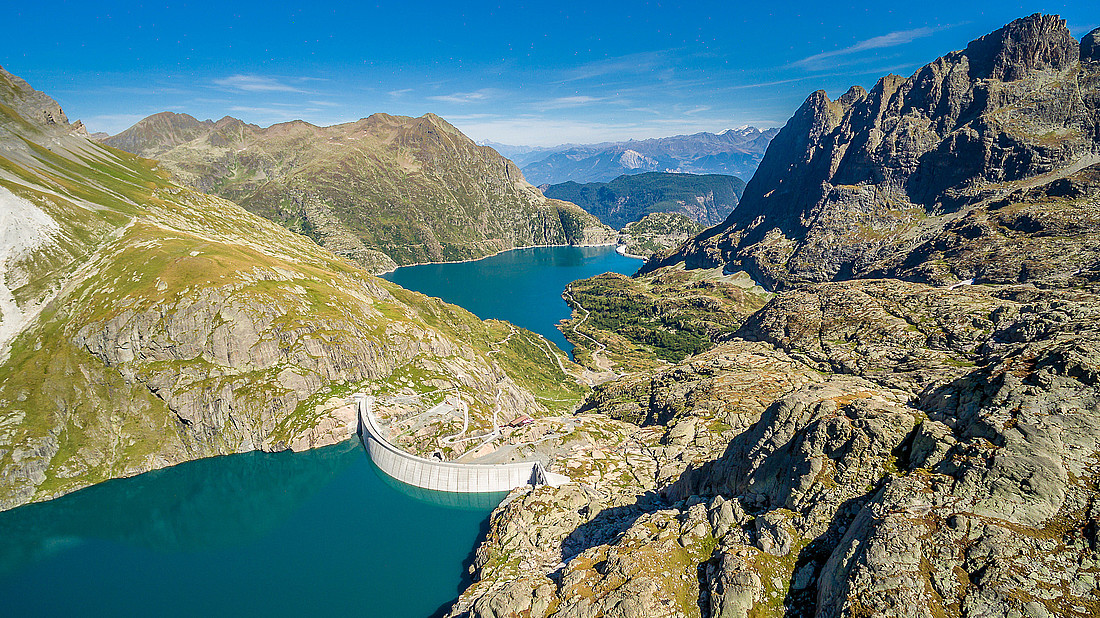
More
Inside Switzerland’s giant water battery
As the Alpine glaciers slowly melt away, Switzerland will have the opportunity to build new dams and artificial lakes in the mountains. This will increase energy storage capacity in the Alps, strengthening Switzerland’s role as Europe’s “electricity battery”.
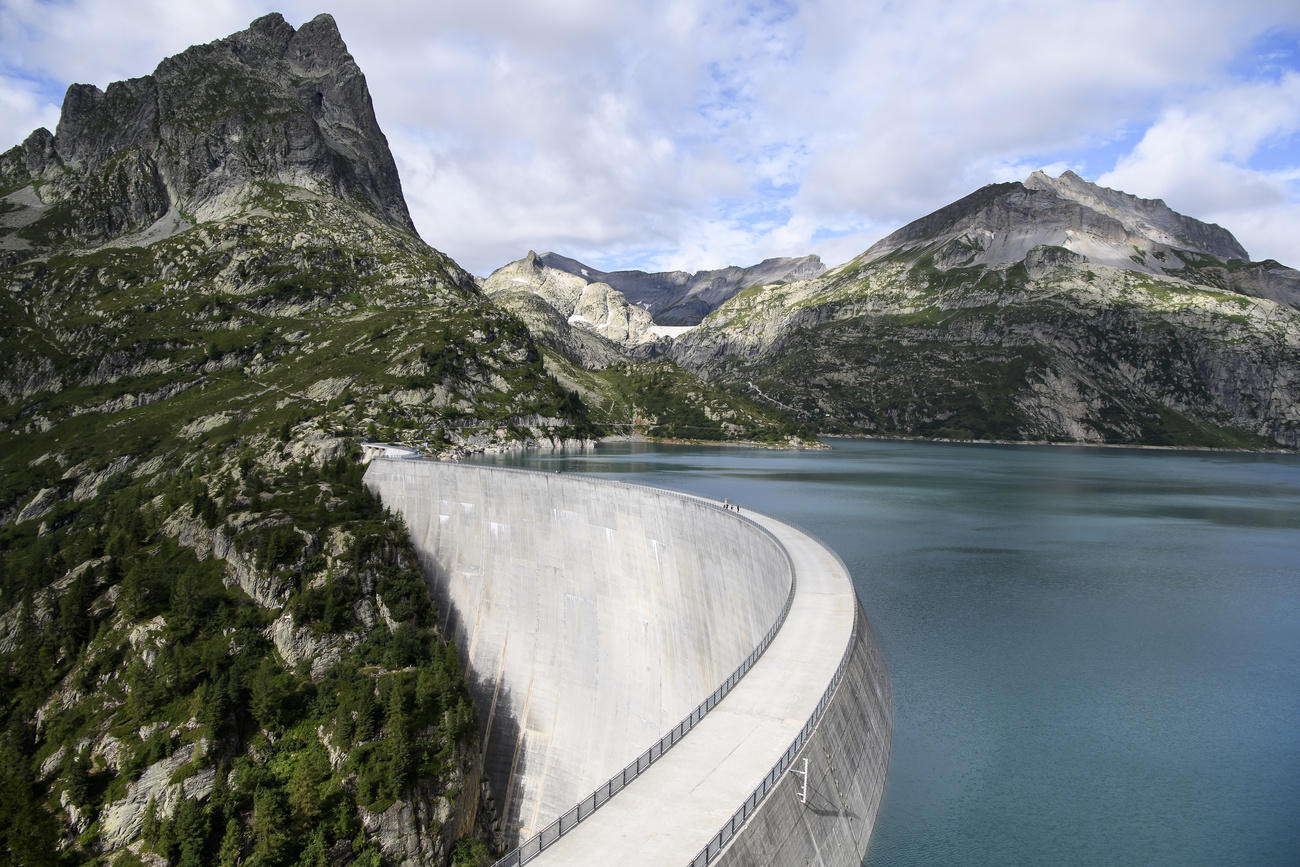
More
Shrinking glaciers to make room for power generation
Generate electricity using gravity
The Swiss start-up Energy Vault follows the same principle as pumping and turbines. But instead of water, it uses concrete blocks. When there is a surplus of green electricity, these “bricks” are hoisted on top of each other to form a 120-metre tower. They are then “dropped” using gravity to generate electricity. The prototype built in canton Ticino, described below, has already attracted interest abroad.
A first operational plant has been built in China, near Shanghai, while a second is expected to come into operation in 2024 west of Dallas, in the United States.

More
Revolutionary idea to store green power for the grid
Emission-free mobility with hydrogen
Surplus electricity can also be converted into liquid or gaseous energy sources. So-called ‘power-to-x’ technologies make it possible to use electricity from a solar power plant or a wind farm to produce hydrogen and then methane, for example. These two elements can be stored for a long time and used as fuels.
Switzerland wants to pave the way for emission-free mobility by replacing fossil fuels with green hydrogen. In 2020, the world’s first fleet of hydrogen commercial trucks became operational and in June 2023, the first hydrogen refueling station on the national motorway network was inaugurated near Bern.

More
Switzerland’s driving role in the green hydrogen revolution
Despite its innovative and entrepreneurial spirit, Switzerland is lagging behind in the race for renewable hydrogen. The country does not yet have a national strategy for hydrogen and in the absence of an energy agreement with the European Union it risks finding itself isolated.

More
Once a hydrogen vehicle pioneer, Switzerland lags in the green fuel race
In search of the battery of the future
In the future, efficient cost-effective systems will also be needed to handle small amounts of energy quickly and with the least possible environmental impact. Switzerland is taking part in the European research initiative Battery 2030, which aims to improve the longevity and energy density of conventional lithium-ion batteries so that fewer rare metals are used.
Stationary systems that can stockpile renewable energy are also set for massive expansion in the coming decades. Lithium-ion and lithium nickel manganese cobalt oxide (NMC) batteries are already being used to store solar and wind energy produced in homes. Scientists are now exploring alternatives that use zinc, vanadium or sodium, for example, which are proving to be well-suited for stationary storage. But they need to be scaled up to meet rising demand and to become cost competitive.
Empa is one of twelve partners involved in the European SOLSTICE battery project together with Swiss firms FZSONICK and Quantis. Their aim is to develop sodium-zinc molten salt batteries operating at high temperatures that can be used to store energy.
Corsin Battaglia, an expert at the Swiss Federal Laboratories for Materials Science and Technology (EMPA), explains Switzerland’s role: “Whether it’s materials, cell and pack integration, electronics, battery management systems, recycling and mobility or stationary storage, there are lots of companies in Switzerland that are active in the batteries field or even world leaders.”
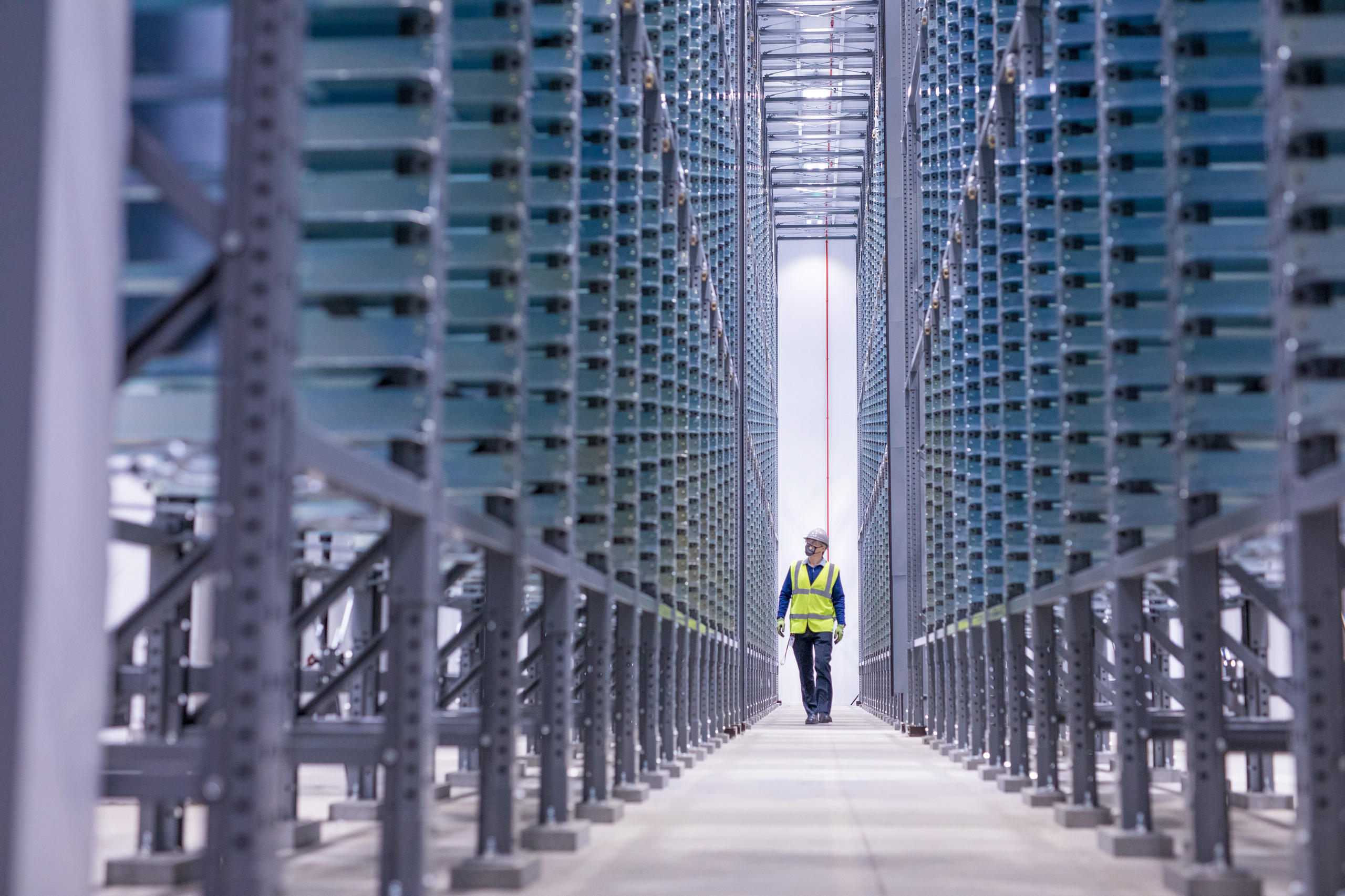
More
Next-gen batteries: Swiss researchers help lead the charge

In compliance with the JTI standards
More: SWI swissinfo.ch certified by the Journalism Trust Initiative
































